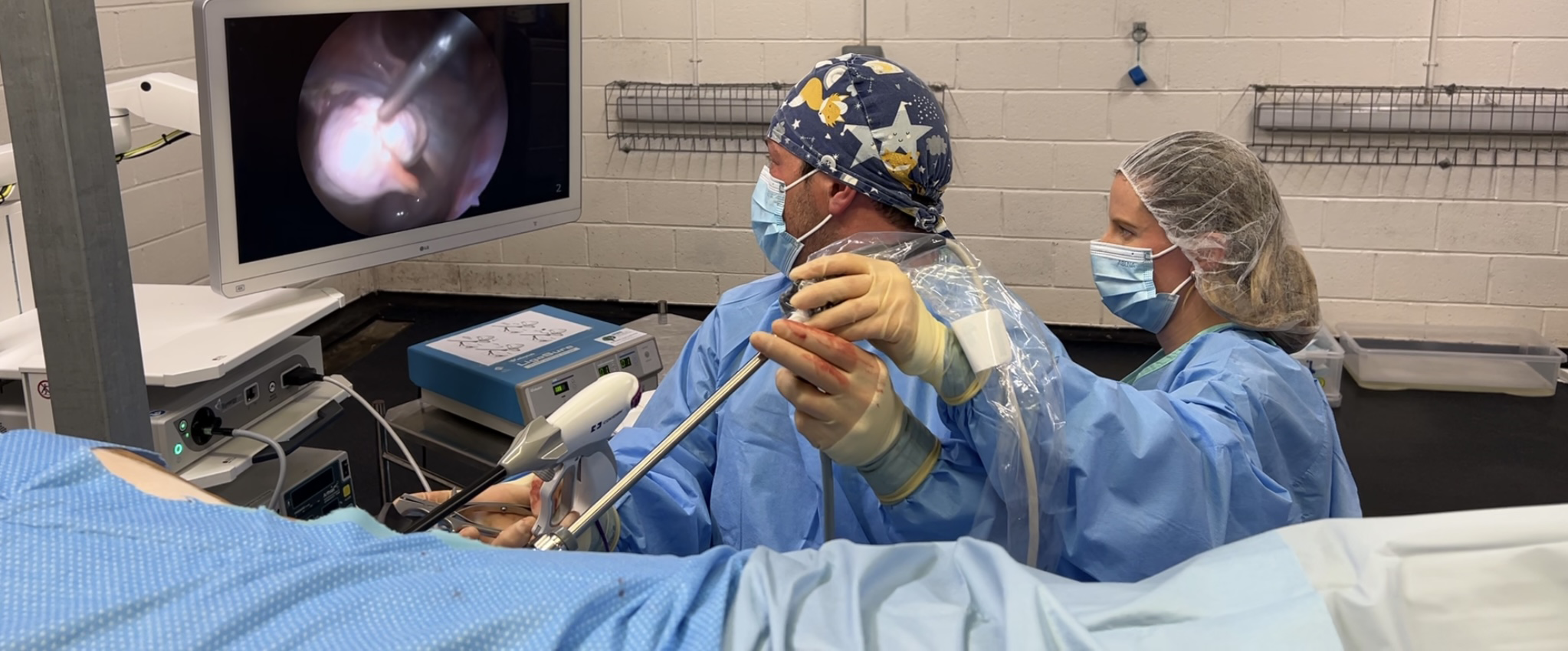What is Equine Metabolic Syndrome (EMS)?
Equine metabolic syndrome (EMS) is a recognised hormone condition in ponies and horses. The term describes a syndrome characterised by obesity, insulin resistance and predisposition to laminitis.
The condition is similar to Type 2 diabetes in people. Insulin has an important role in the body, enhancing glucose uptake from the blood into cells and is very much involved in controlling blood glucose levels. Ponies affected with EMS do not respond to insulin as they should, so high levels of glucose are found in the bloodstream. The increase in glucose and insulin in the bloodstream lead to damaging effects, particularly to the blood vessels in the feet which can cause laminitis.
What are the signs of EMS?
Most horses which are grossly overweight have EMS. It is less obvious in horses which are in good condition or a little overweight. Weight girth and neck measurements are all useful indicators of EMS and also help monitoring weight loss. Laminitis is also commonly encountered in horses with EMS and horses with EMS are less likely to recover from laminitis. EMS also cause the body to be less able to fight infectious diseases, increases the risk for strangulating colic which requires surgery, causes horses to have less energy and perform poorly and can also cause reduced fertility so mares are less likely to get in foal.
How do we test for EMS?
Testing for metabolic syndrome is performed by blood tests to measure insulin and glucose levels. There are two main options for testing. The simplest way is to take blood sample at home after either a period of starvation or feeding a measured amount of glucose. For other horses we can measure how their metabolism responds to injections of glucose and insulin over the course of a day in the Hospital.
How is EMS managed?
The single most important treatment for EMS is diet and exercise. By eating less and exercising more, metabolism changes and weight is lost. Treatment with drugs is possible but it should only be used as a short-term solution until exercise and diet strategies and weight loss are effective. Drug use without effective management will not work.
Weight reduction and feeding horses with EMS or at risk of Laminitis
- Weight loss must be controlled and gradual
- All sugary and starchy treats should be stopped (sweets, fruit, vegetables and molasses)
- All cereal feeds must be stopped – horses which are overweight do not need hard feed
- Any medications to be given can be given in a small amount of grass nuts or chopped alfalfa/straw products designed for laminitics
- A balanced vitamin/mineral supplement should be fed due to feed restriction to ensure adequate provision of trace elements
- Turn out on grass should be restricted – thirty minutes to one hour twice daily is generally recommended (discuss your horse’s individual situation with your vet)
- The remainder of the diet should be made up of hay which should be fed at 1-2% (dry weight) of the horse’s ideal body weight (For a 500kg horse this 5-10kgs dry hay per day) Weighing hay is a good habit to get into
- Hay can be analysed and ideally it should contain less that 10% NSCs (non-structural carbohydrates) If hay is not analysed or contains over 10% NSCs, soaking hay for 12 hours and then rinsing will remove about a third of the sugars which ensures adequate protein and fibre are provided while limiting sugars
Hay production
Sugar levels vary enormously depending on conditions. Avoid cutting hay early in the growing cycle and opt for hay which has gone to seed. Hay should not be cut after stressful conditions such as cold/drought. Ideally cutting hay early in the morning then curing it slowly in mild conditions rather than rapid drying will lead to lower sugar content.
Exercise
The more exercise the better (laminitis permitting) Exercise burns calories but it also changes the metabolism so sensitivity to insulin increases. Small ponies which do not have a small enough rider can be a challenge to exercise – leading them from another horse, lungeing or long-reining will keep them active.
Many overweight horses are stabled to restrict grazing however, turnout in a school or yard will increase physical activity. Turnout is not sufficient exercise.


